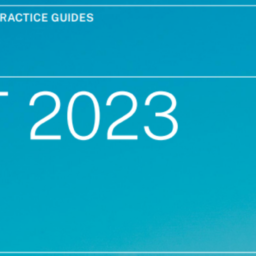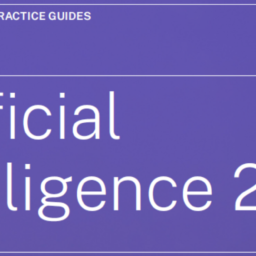The European Commission has approved amendments to Regulation 651/2014 of 17 June 2014 declaring certain types of aid compatible with the internal market in application of Articles 107 and 108 of the Treaty (“GBER”).
The amended regulation makes it possible to grant state aid that meets the conditions set out therein, without having to obtain the European Commission’s consent each time. It is the basis for granting, inter alia, tax exemptions in special economic zones and the Polish Investment Zone, as well as government grants under the Programme for the Support of Investments of Significant Importance to the Polish Economy for 2011-2030.
Changes made
Increase in maximum aid amounts
The amendment increases the maximum amounts of particular categories of aid that can be granted under the GBER. The threshold for notifying aid to the European Commission will therefore be increased.
Among other things, the thresholds for regional investment aid (e.g. the Polish Investment Zone) will be increased. For investments with eligible costs of at least EUR 110 million they will be:
| Maximum aid intensity in the area concerned / Region in Poland | Maximum amount of aid | |
| Currently | Amendment | |
| 20% – Poznań and Wrocław and the Poznań sub-region | EUR 15 million | EUR 16.5 million |
| 25% – area of the Lower Silesian and Greater Poland voivodships, part of the Warsaw Capital Region | EUR 18.75 million | EUR 20.63 million |
| 30% – area of Pomorskie and Śląskie voivodships | EUR 22.5 million | EUR 24.75 million |
| 35% – part of Warsaw Capital Region | EUR 26.25 million | EUR 28.88 million |
| 40% – area of the following voivodships: Kujawsko-Pomorskie, Lubuskie, Łódzkie, Małopolskie,
Opolskie, Zachodniopomorskie and Mazowieckie (regional), with the exception of Siedlce sub-region |
EUR 30 million | EUR 33 million |
| 50% – area of the following voivodships: Lubelskie, Podkarpackie, Podlaskie, Swiętokrzyskie, Warmińsko-Mazurskie and Siedlce sub-region | EUR 37.5 million | EUR 41.25 million |
Notification thresholds have also been increased in other types of aid, including:
- R&D aid, the maximum amount of aid per company per project, has been increased:
a) if the project mainly involves fundamental research up to EUR 55 million (from EUR 40 million),
b) if the project mainly involves industrial research up to EUR 35 million (from EUR 20 million),
c) if the project mainly involves experimental development up to EUR 25 million (from EUR 15 million); - investment aid for research infrastructure, the maximum aid value was increased from EUR 20 million to EUR 35 million;
- operating aid for the production of electricity from renewable energy sources and operating aid for the promotion of energy from renewable sources in small-scale installations – from EUR 15 million to EUR 30 million;
- investment aid for energy infrastructure – from EUR 50 million to EUR 70 million;
- investment aid for environmental protection – up to EUR 30 million in principle (currently: EUR 15 million in principle);
- investment aid for hydrogen charging or refuelling infrastructure – from EUR 15 million to EUR 30 million.
New types of aid
The amendment focuses largely on environmental and energy issues. New categories of aid to compensate for energy costs have been introduced into the GBER. Such aid has so far been provided on the basis of the Temporary Crisis Framework for State Aid Measures to Support the Economy following the aggression against Ukraine by Russia. Among other things, the possibility to provide support to companies belonging to the SME category due to high energy prices resulting from Russia’s aggression against Ukraine has been introduced. Accordingly, SMEs will be able to receive up to EUR 2 million worth of assistance per year. Micro-enterprises will be able to receive up to EUR 200,000 per year of aid in the form of maximum prices for electricity, gas or heat and compensation for energy consumption costs. The rules on energy efficiency aid have also been modified.
The possibility has been introduced to grant investment aid for the acquisition of clean vehicles or zero-emission vehicles and the retrofitting of vehicles. Eligible costs will, in principle, be calculated as the difference between the cost of purchasing a zero-emission vehicle and another vehicle of the same category. The aid intensity can be up to 100 per cent of the eligible costs.
In turn, under aid for research, development and innovation, a category of aid for investment in testing and experimentation infrastructure has been introduced with a maximum intensity for a large entrepreneur of 25%, with the value being able to be increased by, among others, 10 p.p. for medium-sized enterprises and 20 p.p. for small enterprises. The maximum amount of aid per project will be up to EUR 25 million.
Alignment of GBER with other regulations
The amendment aligns the provisions of the GBER with the new Regional Aid Guidelines, the Climate, Energy and Environmental Aid Guidelines, the Risk Finance Guidelines, the R&D and Innovation Framework and the Broadband Guidelines.
Extension of the GBER
The amendment extends the GBER until the end of 2026.
Entry into force
The regulation will be formally adopted in the coming weeks once the text has been translated into all official EU languages. It will enter into force the day after its publication in the Official Journal of the European Union.











